This post may contain affiliate links, meaning I can earn a small commission from items you purchase (at no cost to you).
This healthy coffee recipe isn’t just a caffeine boost, but an opportunity to infuse a variety of health benefits into your daily routine. I am more focused and accomplish more in a day with this cup of coffee, and I know its energy can work in my favor.
What makes this elixir so powerful? Just five easy ingredients. Not all coffee is created equal, and it starts with the beans.
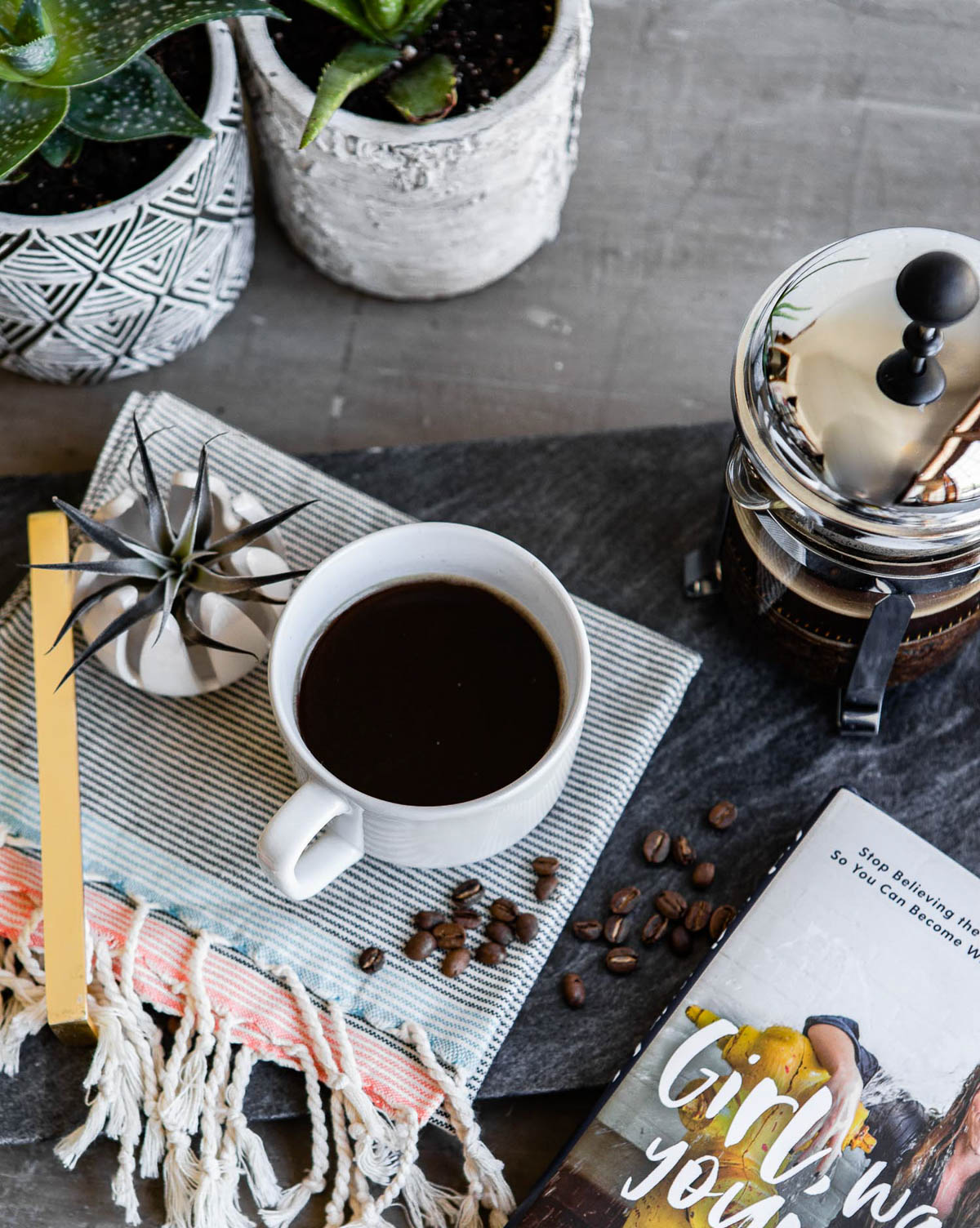
Table of Contents
Recipe Ingredients
This is not your average morning cup of joe. While it takes a little extra effort, it’s totally worth it for sustainable energy, a more filling cup and a myriad of health benefits. Here’s what’s in my morning mug:
- Coarse, ground coffee beans: I care about my coffee beans so I choose high-quality beans from JavaPresse. Learn more about them below!
- MCT oil: I prefer MCT oil to coconut oil because it is flavorless and contains only medium-chain triglycerides. A little goes a long way with this potent oil! My preferred brand is Nutiva MCT Oil.
- Grass-fed butter: This unique ingredient is going to keep me full longer and help my coffee give me smooth energy without the crash. Grass-fed versions are more nutritious than regular butter. My go-to brand is Kerry Gold unsalted.
- Vanilla extract: Use the real stuff, not imitation, to give this a light vanilla flavor. Omit if you aren’t a fan.
- Collagen powder: Another thing I’m focusing on is strengthening my hair and nails. Collagen powder works great for this and my go-to brand is Vital Proteins.
While these ingredients are a bit expensive, you are only using a little of each per cup, so I can get a lot of servings. Plus, it’s worth it to me to get the right ingredients to start my day!
Sourcing the Right Coffee Beans
I learned a lot about beans, as well as the impact they can have on farmers, soil and health benefits from Raj Jana, founder of JavaPresse, a small-batch coffee company. Let’s take a deeper dive into what I learned from Raj. He gave some awesome ways for us to get the most out of our daily cup of coffee by making it even healthier.
A hot mug of coffee isn’t just any drink for most of us. It’s the launchpad for each day. And yet, we often treat our morning coffee like an indulgent treat rather than an opportunity to start each day with a healthy, life-enhancing habit.
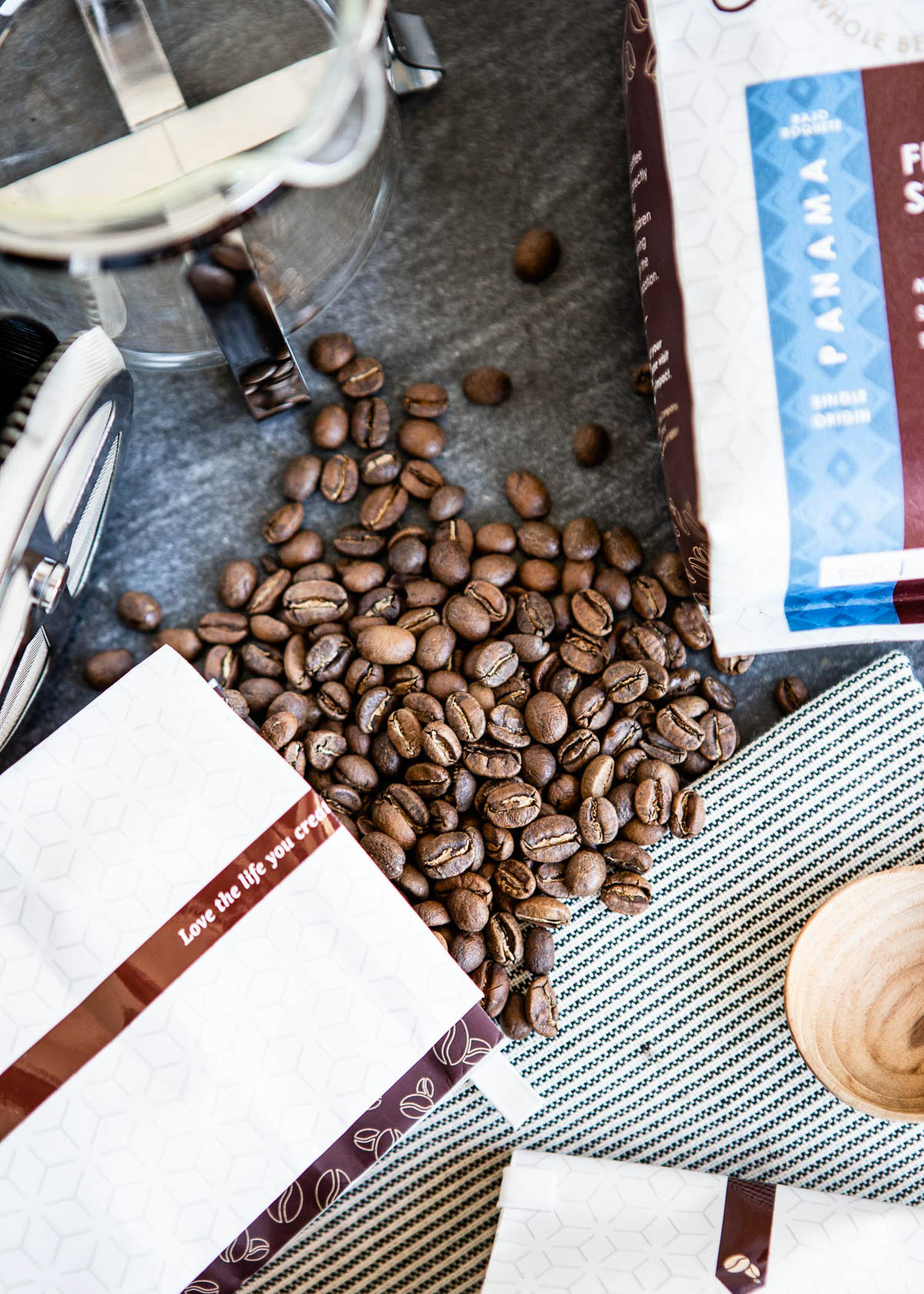
environmental certifications
There are a few environmental certifications you can look for to ensure your coffee’s grown naturally. These certifications use strict standards about what kinds of chemicals can be used, which makes them a safe bet:
- Certified Organic
- Bird-Friendly
- Rainforest Alliance
- UTZ Certified
There is a potential downside to only sticking with Certified Organic coffee. Most coffee farms don’t have enough financial security to invest in that particular certification, since it can be costly for small, rural businesses. By only buying Certified Organic beans, you may unknowingly penalize incredible farmers, because they can’t afford the certification.
If there’s a local roaster you want to support, call them and ask how their coffee is grown and sourced. While they may not have the certification on their beans, their farmers may be following great practices that are worth supporting!
A Balanced, Healthy Coffee Recipe
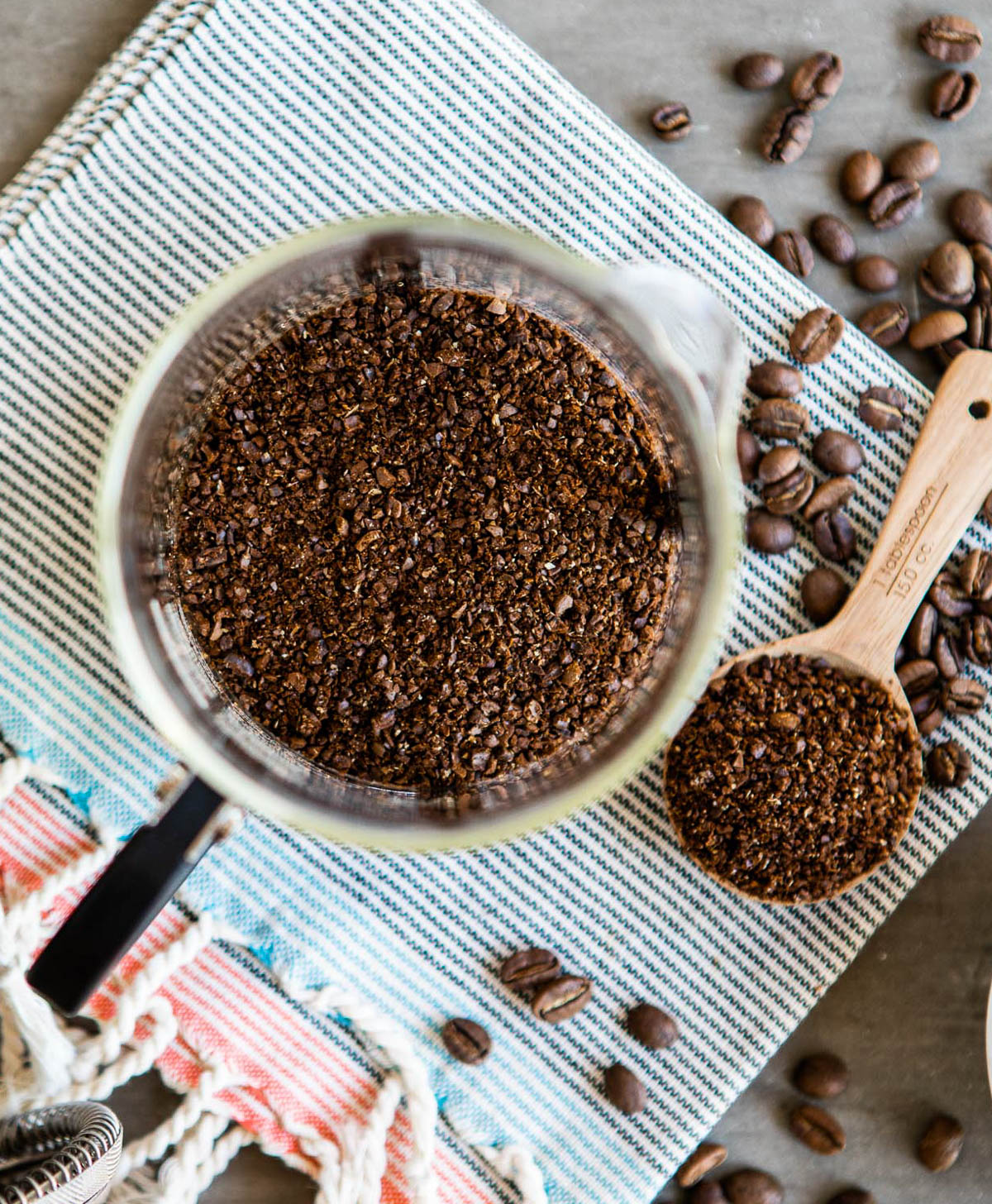
Now that I’ve got the right beans for my coffee, let’s talk about what goes into that ‘perfect cup.’ For me, it’s a mix of moderation and using high-quality ingredients. This healthy cup of coffee gives me stable energy, mental clarity, helps flush out my system and also keeps my skin glowing.
The recipe I use is quite radical for a cup of joe sorta person. It requires a blender (yes, blender), as well as a few niche products found through Amazon and the local grocery store. Here’s how I make mine:
- Grind your coffee beans in a coarse setting just before brewing. Pour the grounds into a French press.
- Heat water until boiling then pour it over the grounds in the French press. You can put the lid on, keeping the plunger all the way up.
- Start a timer. After one minute, take a spoon and gently submerge the grounds that have formed a “crust” on the surface.
- After 4 minutes, press down the plunger. Pour the brewed coffee into a heat-safe blender container.
- Gently add the remaining ingredients and blend until smooth.
- Drink warm and enjoy!
The blender emulsifies the grass-fed butter and coconut oil, creating a creamy and frothy drink with a boost of beneficial fats. It’s inspired by Dave Asprey’s Bulletproof Coffee, who originally introduced me to this incredible coffee recipe.
Lately, I have been upgrading it even more with grass-fed collagen powder. I think once you hit your 30s and the grey hairs start popping up, it’s time to take aging seriously. I’m investing in my longevity with high-quality collagen and loads of healthy fats, which is exactly what this coffee recipe is all about.
If you’re a decaf person, then I recommend using Dandy Blend, as it is the best coffee alternative out there, in my opinion. I’m in love with this stuff! It’s caffeine-free, gluten-free and delicious. I seriously don’t even realize I’m not drinking coffee. It’s so similar.
Healthy Morning Routine
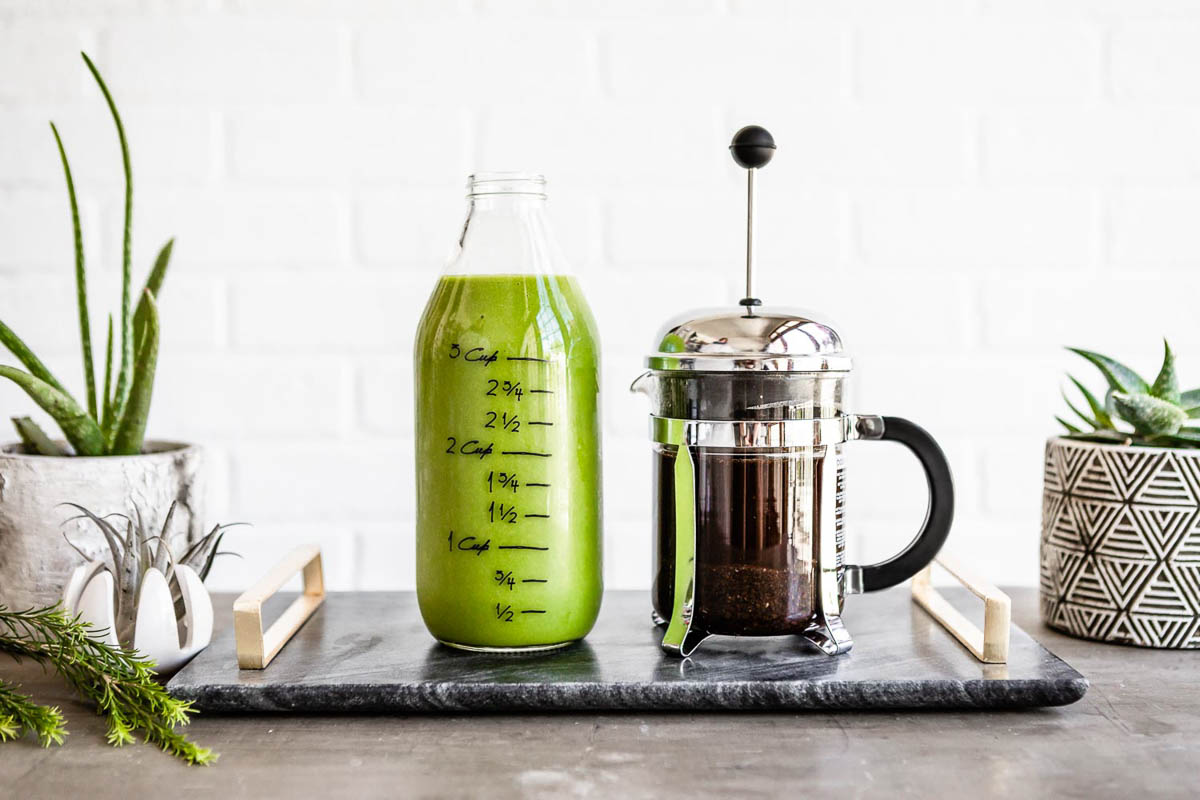
Along with my cup of coffee, I’m also trying to be more intentional with my entire morning routine. Enjoying a cup of coffee while reading a good book has been a recent experience for me. During my morning routine, I focus on a book that will help set my mindset for the day, like a devotional or meditation-style reading.
Back to my point. Your morning mug can be so much more flavorful, rewarding and healthy (if you choose to embrace it!) Here are some tips on how you can do it.
Keep your coffee simple
I used to say “I like coffee with my half and half,” which was the truth. I would pour in the cream to make the coffee less bitter, as well as much creamier. Over the years, I transitioned from love for cream, to grass-fed butter in my coffee. The results are where it’s at! Removing super-processed dairy from my coffee has not only helped with tummy trouble but also acne and bloating. And the extra dose of healthy fats keeps me satiated because the creamy coffee kickstarts my digestive system.
Maybe dairy isn’t your thing. Maybe it’s the sweetener. Well, it’s time to remove the sweeteners, because they are creating artificial energy and leaching nutrients from your body. It’s a short-term win (happy energy) for a long-term loss (weight gain, nutrient deficiencies). Try adding a dash of cinnamon or ground vanilla bean to naturally sweeten it.
Maybe even try drinking black coffee. According to Raj, this is the best way to get the most out of a cup of coffee. And yes, there is a way to do it without gagging from the bitterness or harsh acidic bite. Here’s how:
Buy specialty coffee and then brew it the right way. A good specialty-grade bean ground fresh and made in a French press. Bitterness? Gone. Gross acidity? Gone. It’s incredibly balanced, as well as full of flavor on its own. No additives are necessary.
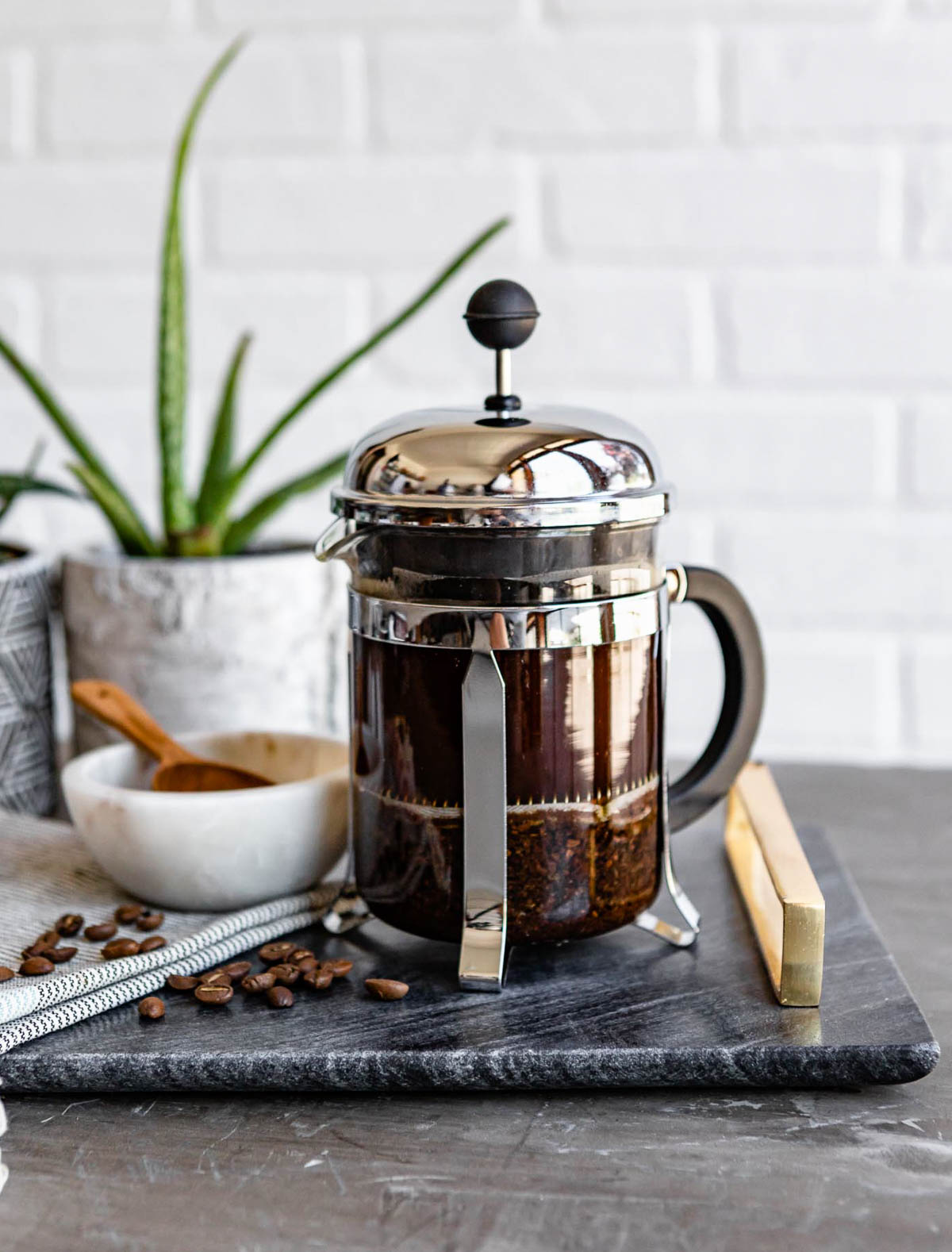
Buy from the right farms and roasters
Not all coffee is grown equally. Buy from roasters who work with farmers focused on quality and sustainability. Did you know:
For 100% pesticide-free coffee, buy from farmers obsessed with environmental sustainability.
To ensure his beans are naturally grown and healthy as can be, Raj only sources coffees from farmers as excited about sustainability as he is—and they are almost always certified by an environmental organization.
By the time coffee beans have been extracted from the coffee cherry, roasted and brewed into rich coffee, there’s hardly any chemical residue left from pesticides. However, especially with low-grade commercial coffee, many of the pesticides being used abroad are actually banned in the United States. This means there’s always a small chance you could be negatively impacted if one of these chemicals finds its way to your beans.
You can easily avoid this risk though, just by buying naturally-grown coffee.
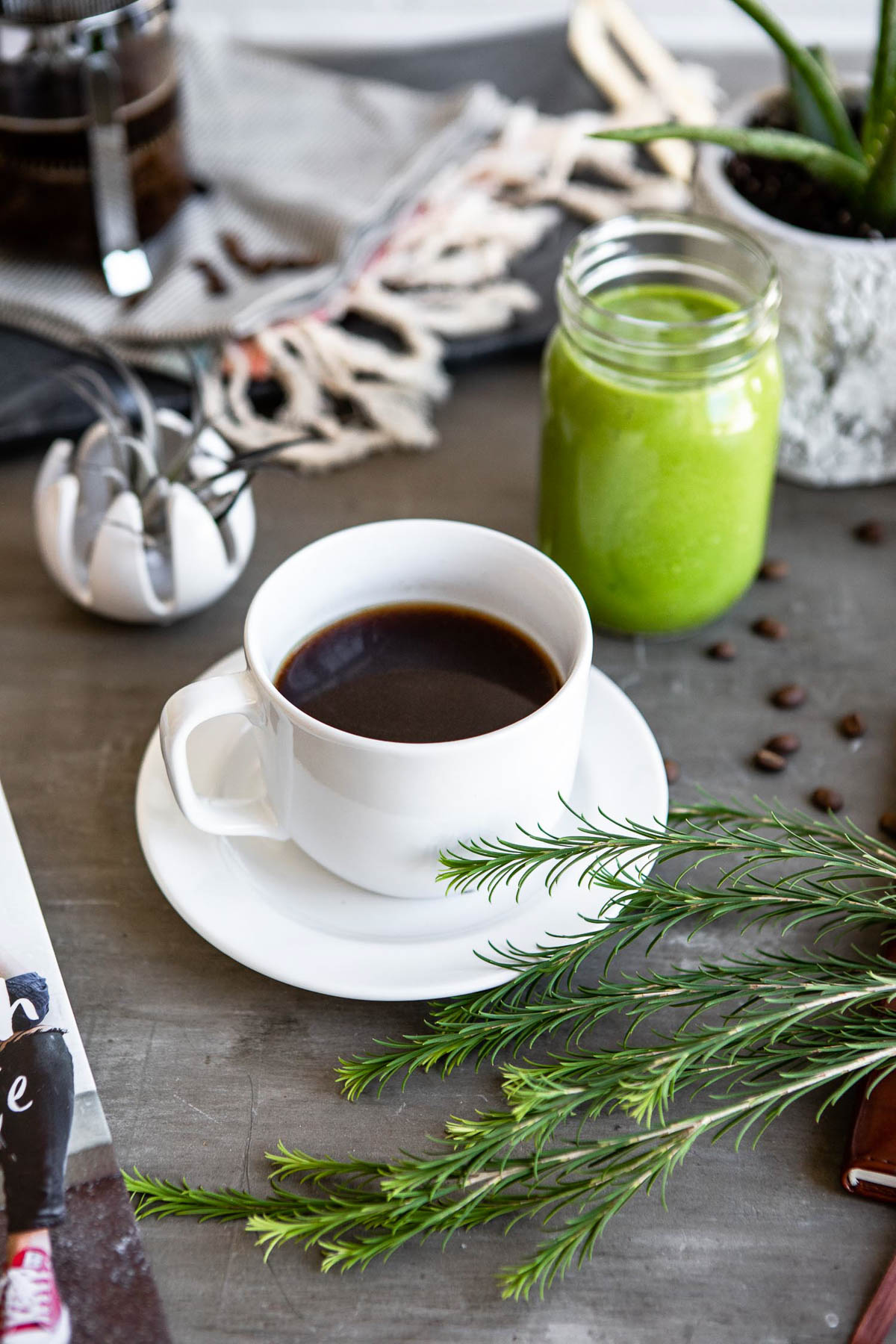
FAQs
Start by choosing beans sourced from sustainable growers. If you don’t know, ask! You should be able to find out if your brand of choice does this by some light internet research, or by asking your local roasted. Second, don’t fill that freshly brewed coffee with sweeteners. Opt for grass-fed butter over half n’ half or creamer and try to avoid added sugar.
Yes! Coffee has natural caffeine that can help you focus. Yet listen to your body! If you find that you’re sensitive to caffeine then definitely drink a smaller amount, add things like grass-fed butter and collagen to your cup to help your body turn that caffeine into long-lasting energy without a crash.
I like my healthy coffee method as it’s more filling than a cup of black coffee and MCT oil helps wake up my digestive system to get things moving in the right direction for the day.
Healthy Caffeine Alternatives
What if coffee just isn’t your thing? I totally get it. I actually have a few other great healthy caffeine alternatives to start the day off strong:
How do you start your morning? I’d love for you to leave a comment with your fav morning routine + drink. Also, let me know if you’ve tried this healthy coffee!
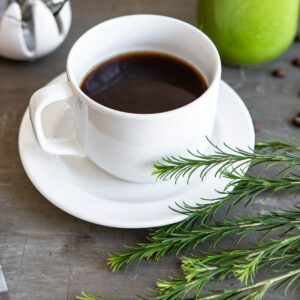
Healthy Coffee
Ingredients
- 2 tablespoon coffee beans coarse ground
- 1 teaspoon MCT Oil
- 2 tablespoon grass-fed butter unsalted
- 1 teaspoon pure vanilla extract
- 1 scoop collagen powder optional
Instructions
- Grind the coffee at a coarse setting just before brewing to preserve the freshness and flavors and pour into french press.
- Heat water until boiling then pour it over the grounds in the french press.
- Start a timer. After one minute, take a spoon and gently submerge the grounds that have formed a ‘crust’ on the surface.
- After four minutes, press down the plunger. Pour brewed coffee in to heat-safe blender container.
- Gently add remaining ingredients and blend until smooth.
- Drink warm and enjoy the healthy fat and protein goodness!
Helpful Tools
Notes
- Standard pre-ground coffee is generally too fine for French press brewing and may get stuck in the mesh filter, creating a lot of resistance when you try to plunge.
- Regular brewed coffee can be used as the base if you don’t have a French press.
- After plunging the filter, make sure to decant all the coffee. Otherwise, it will slowly continue to brew and become bitter within the press.

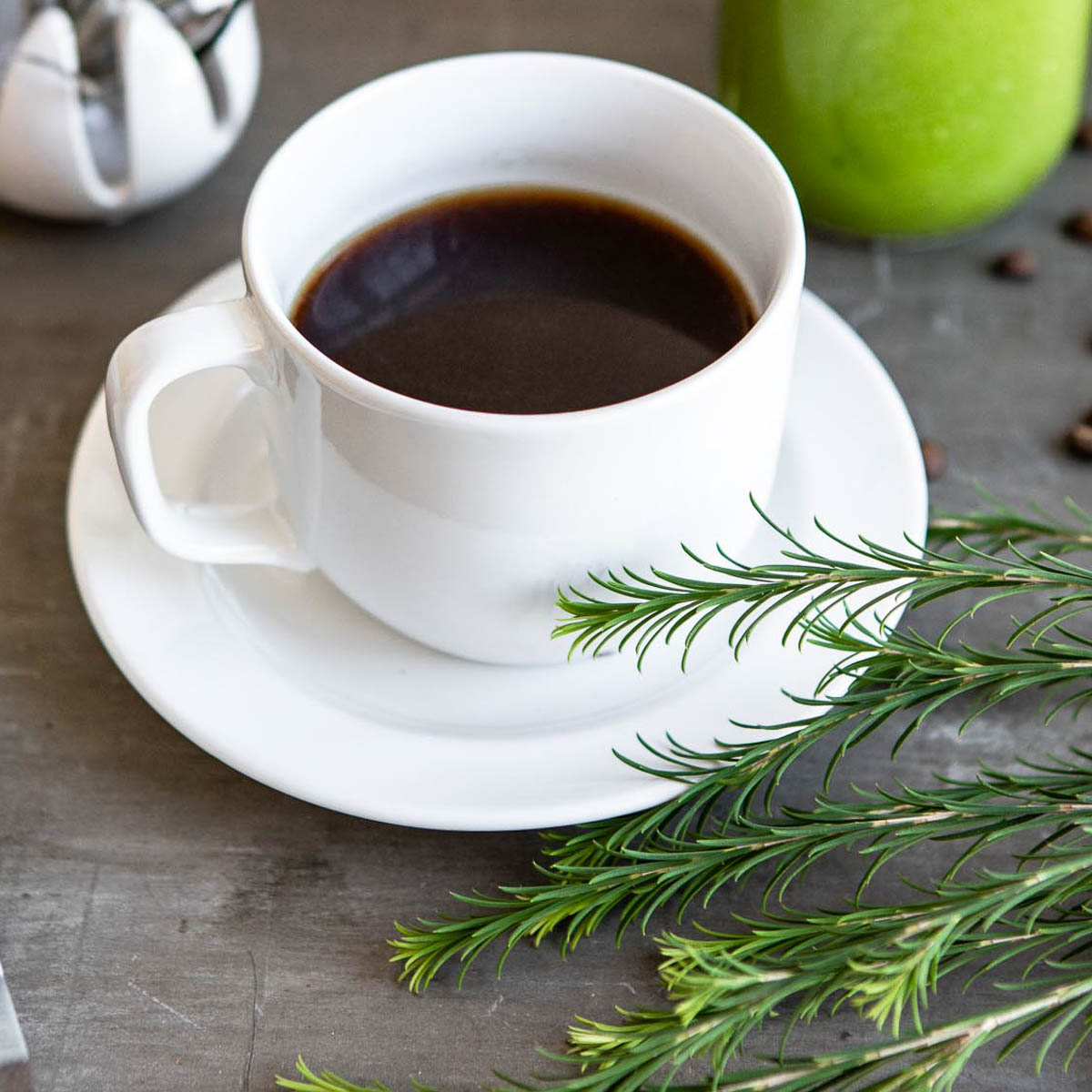


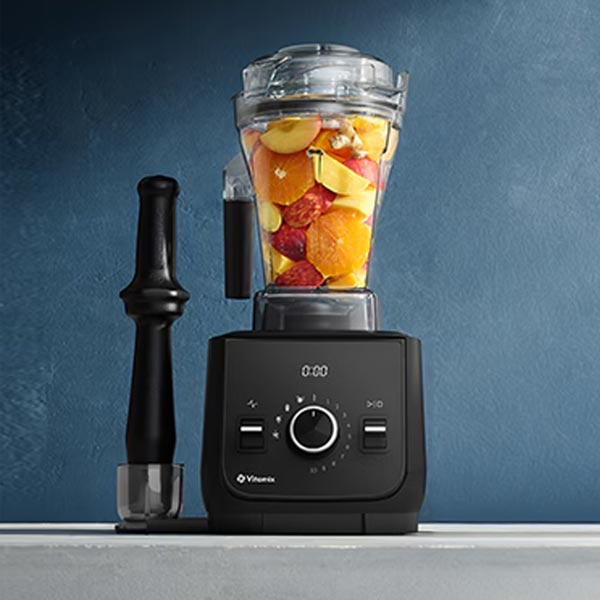

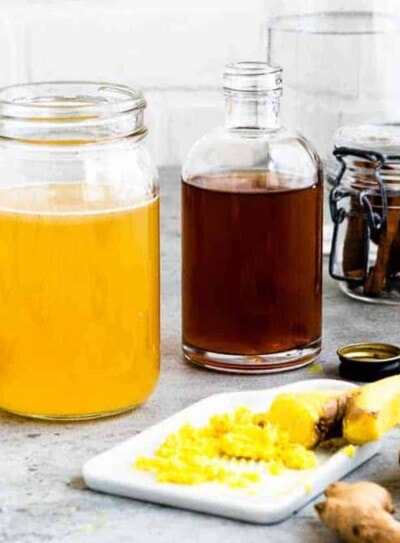
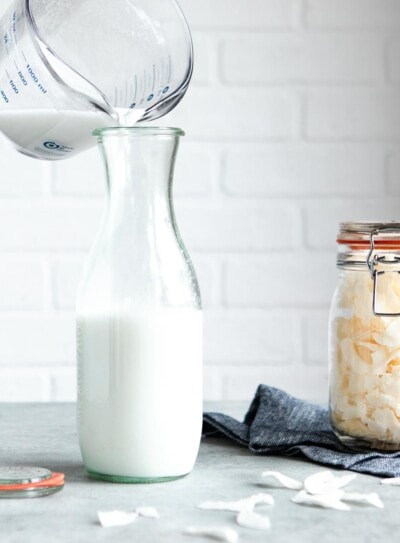
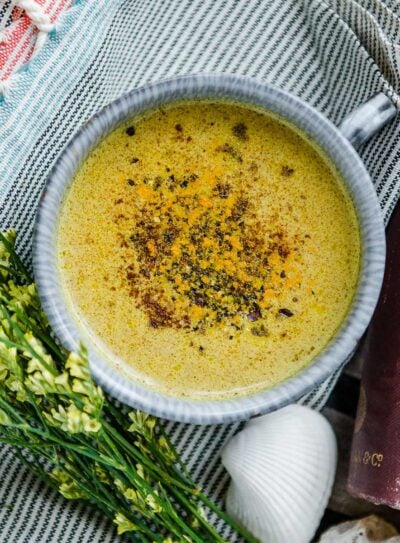
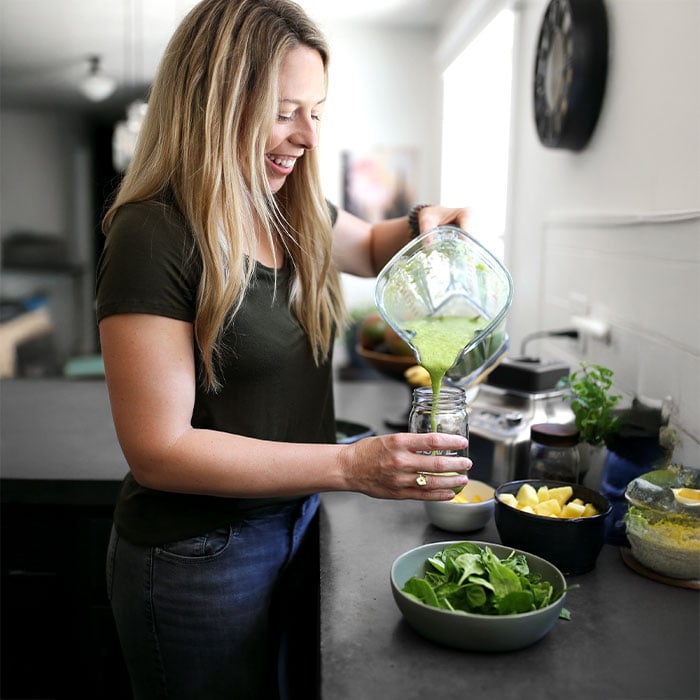
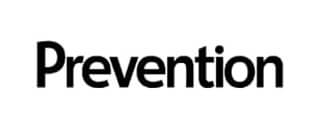








I’m a relatively new mom so I feel like I am constantly re-microwaving my coffee lol! I know that’s not the best but that’s real life. I usually make it in my keurig and I enjoy frothing some milk if I have the time. I need to try your method and the french press idea sounds divine!
Def give this recipe a try, Liz!
I love steaming milk to go with my morning coffee. Frothy milk seems so decadent somehow…
It really does!
I love everything about coffee except the brewed flavor. Can’t wait to try this and see if it converts me!
Give it a try and let us know!
I have gotten so lazy, I now buy already ground coffee and use a cheap coffee maker. Not too good but better with milk and sugar, and I know I need to stop adding both to a cup. Would love to try the French Press!
Def give this recipe a try, Andi!
I have always wanted to try French Press coffee! I like to make cappuccinos at home with a milk frother and some concentrated coffee!
That sounds tasty!
We use a regular coffee pot to brew our coffee and grind (organic) beans as we need them. I like to add coconut oil, raw cacao, tumeric, cinnamon and a splash of pure maple syrup.
That’s a great combo!
Simple, delicious French Press coffee – with just a touch of cream. It’s delightful!
Sounds like it, Ginag!
There is both special to how we brew coffee but am looking forward to a healthier alternative. Looking forward to trying these suggestions! Thank you!
You’re welcome, Angie!
I’ve used the AeroPress for the past…8?…years. Awesome, flavorful coffee, without the chewy surprise at the bottom that you get with the French Press. Oh, and I get good quality coffee. Spend a little extra…totally worth it.
Thanks for sharing, Benjy!
I use organic coffee in compostable k-cups. I’m very interested in the process of making coffee in a french press– enjoying the ritual of making a fresh delicious cup of coffee, instead of slamming a k-cup in the machine for coffee immediately after I wake up!
It’s def a different type of routine!
I buy locally roasted coffee, use my electric grinder that I’ve had for years & my french press, though sometimes I do cold brew. Love knowing that my coffee will be just right. Just recently my french press cracked & broke though 🙁 The break was high so it’s still mostly usable, but I really should get a new one!
So sorry your french press broke!
I use a Keurig at home but use reusable k-cups so I don’t feel guilty about it. I put way too much cream and sugar in my coffee generally so this article really sparked my interest about drinking a healthier cup of coffee!
You should definitely give this recipe a try, Cassandra!
I love a fresh shot of espresso! And cold brew in the summer time 🙂
Both are wonderful!
I use a Keurig machine but am trying to use the k-cups I have and make the switch to reduce waste. In an effort to reduce my carbon footprint, I am looking for an alternative!
Did you know they make reusable k-cups? You should give those a try!
I use my k-cup but I’ve recently read a lot about coffee and have wanted to make the switch to french press.
I have a feeling once you try coffee this way you will have a hard time going back to the k-cup!
Most days I throw a k-cup in my Kuerig, although I love the idea of freshly ground coffee 🙂
The k-cup is so convenient, yet I really do think we miss out on the beauty and health of coffee when we do that.